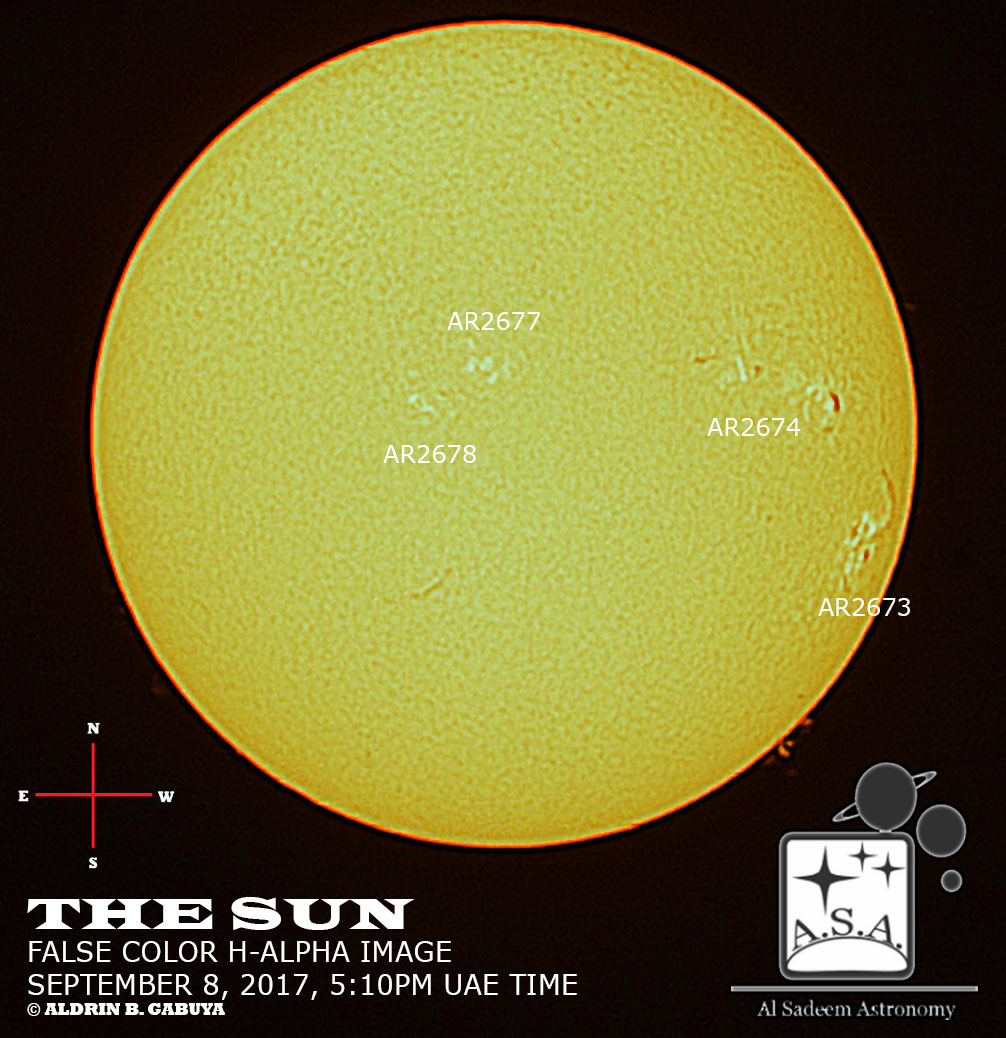Here are today’s solar images taken from Al Sadeem Observatory, September 8, 2017.
The sky was mostly clear with less air turbulence, making the seeing and transparency good at the time these images were taken.
High-level solar activity has persisted over the past 24 hours. Four active regions are currently visible on the Sun. AR2673 has been the primary source of this high-level solar activity; produced several moderately strong M-class flares. Radiation and energized solar particles from the September 6, 2017 X-flare and CME signature event has reached Earth and generated an intense geomagnetic storm which is causing extensive radio and navigational satellite communication disruptions/blackouts, as well as bright aurorae in the polar regions and has seen as low as in the northern mid-latitudes (much of Canada).
On the other hand, despite its large structure and potential, AR2674 (trailer spots growing), as well as the other small sunspot groups AR2677 and AR2678, were magnetically stable and inactive without any significant flaring activity recorded.
As AR2673 and AR2673 are nearing towards the Sun’s western limb, a gradual decrease in sunspot count was observed. The latest sunspot number (based on visual count and Wolf number calculation) is 74.
With this stance, space weather agencies* predict prevailing moderate to strong solar activity, with flare intensity ranging from B-class to C-class with a moderate chance of M-class and possibly up to X-class; most likely from AR2673 or AR2674) in the next few days. The extent of the frequency and intensity of the Sun’s activity will highly depend on the magnetic flux fluctuations happening in the visible ARs in the coming days. Close monitoring is being conducted by numerous space weather agencies for any significant development.
*courtesy of Solar Influence Data Center (SIDC), NOAA-Space Weather Prediction Center (NOAA-SWPC)









